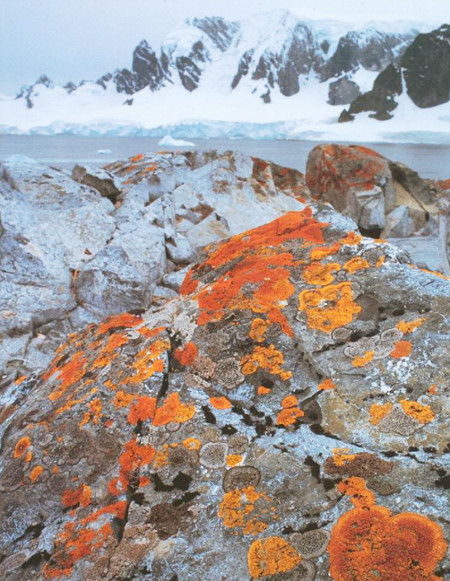Itinerary edited by the UNIVERSITY OF TUSCIA 

This work, based on the collections of the Botanical Garden "Angelo Rambelli" and the Mycological section of the Italian National Museum of Antarctica "Felice Ippolito", aims to illustrate the hot and cold desert environments and the adaptations of organisms to survive in arid conditions, sometimes apparently incompatible with life.
To the left:sx:
Botanical Garden "Angelo Rambelli",
Desert Section. To the right:
Botanical Garden "Angelo Rambelli",
the "Rocky Ridge"

The word comes from the Latin desertum = desert, and deserere that means "alone, abandoned"; Therefore, this term indicates an area populated by poor and highly adapted life forms. High atmospheric pressure limits the rainfall that are unlikely to exceed 250 mm per year and in some cases may be absent at all for years.
Deserts cover a large part of the planet with a total area of 50 million square kilometers, about one third of the Earth's surface, of which 16% are hot deserts and 14% cold deserts.
We can distinguish three main typologies:
Extremes of temperature and water deficiency represent a challenge for life in the desert areas. Both in hot and in cold deserts, life forms become more and more rare, but very specialized, towards the internal areas. Both plants and animals have evolved peculiar strategies to survive and adapt the extreme conditions of desert areas.
The hot deserts
To optimize the exploitation of the very scarce water availability in arid environments, plants have evolved a number of both physiological and morphological adaptations. In some cases, they have a vegetative growth exclusively during the rainy season; during the dry season they usually lose their leaves, when present; in some cases they can perform photosynthesis also when stomata are closed (CAM photosynthesis - Crassulacean Acid Metabolism). Plant morphology can vary considerably: cylindrical or spherical shapes, which expose to light the minimum surface, are preferred. Suitable reserve tissues, to temporarily store water absorbed in favorable conditions, may be present (succulent plants); the leaves may be absent or reduce to spines, as for Cactaceae, or may be covered with dense hair that slow down transpiration, as in many shrub species. The roots are often very expanded and superficial to optimize water uptake from the soil.
The polar deserts

There are more than 5,000,000 square kilometers of polar desert on our planet, mostly located in two regions: the Arctic and Antarctica. Although 70% of the planet's fresh water is in Antarctica, it is in frozen form and thus not available for biological processes. Therefore, the continent, as a whole, is considered the largest desert in the world. The Antarctic Continent has temperatures always below 0° C for the whole year, ranging from -26 °C / -30 °C during the coldest month (August) and the annual averages of -17 °C / - 19 °C. At high altitudes and on plateaus temperatures can drop dramatically: the lowest measurements were -89.2 °C at the Russian Vostok Station in 1983 and -92.3 °C in the continental east from satellite measurements in 2010. The rainfall, present only as snow, is very scarce, with annual averages ranging between 100 and 200 mm, but in some areas it has been estimated that there were no precipitations for millions of years. There are two species of vascular plants distributed exclusively in the Antarctic Peninsula, while on Continental Antarctica the primary producers are mosses, especially along the coasts, and lichens; they live on the rocks of the ice-free areas, representing 2% of the continent. The McMurdo Dry Valleys, with an area of 4000 km2, is the largest ice-free region of Antarctica; there, and in some other rocky outcrops represented by the peaks of the Transantarctic mountain chain, environmental conditions reach and exceed the tolerance limit for life and lichens and associated microorganisms, find a protected niche within porous rocks, forming endolithic community. Endolithism is the most spectacular adaptation to the toughest conditions and the most common life form in those environments.
The organisms of these communities live at the edge of their biological potential, and are among the most resistant known to date. In particular, a group of microfungi is capable to survive extremes of temperature, dryness, ultraviolet and ionizing radiation, and even real space conditions. Their cells are protected by a thick and melanized cell wall; these features protect them from many environmental stresses. Their life cycles are very simple and are successfully concluded even in the very short windows when active life is possible. For the rest of the time they remain frozen and in a state of quiescence.